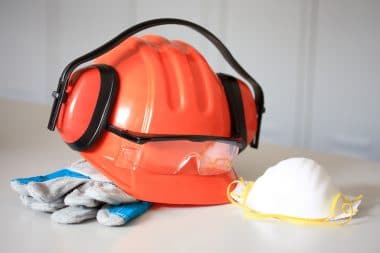Maintaining a safe workplace has always been essential, even before the pandemic arrived. Practicing efficient occupational hygiene routines is, therefore, vital for business owners and employees alike so they can be protected from exposure to potential risks that may arise from their day-to-day business operations.
But as a business starts to expand, it can be more challenging to improve occupational hygiene routines due to increased operations and more risks arising over time. With this in mind, it’s crucial to review occupational hygiene protocols regularly. To ensure that your workplace is safe and has the appropriate protocols in place, consider working with professional indoor environment and risk-management services like those from opira.com.au.
Additionally, check out several tips below to improve workplace safety and occupational hygiene routines:
1. Set Up A Schedule
Cleaning the workplace should be a joint responsibility and a routine. If you’re a business owner, assign a crew who will do the cleaning, and set proper guidelines in place about how frequently this should be accomplished. Some workplaces need more frequent cleaning than others, especially if they have more traffic going on within the workday. Setting up a cleaning schedule can help a lot in maintaining tidiness and cleanliness within the office, especially for places like restrooms and pantries.
Moreover, encourage your employees to keep their individual workstations clean. This won’t just translate to a cleaner environment, but it can also help boost their productivity and overall mood.
2. Provide Health And Safety Courses
Keep in mind that the good habits of employees in the workplace will ensure the preservation of acceptable hygiene standards. Thus, it’s vital to provide your workforce with an effective educational program that covers health and safety courses.
Letting your staff undergo a course in industrial hygiene, for instance, can help them identify key processes, as well as physical, chemical, biological, and ergonomic hazards in the workplace. They’ll also be able to evaluate these hazards and preserve hygiene standards as needed. Be sure to set aside some time for your employees to undergo the necessary health and safety courses most relevant to their occupation and work setup.
3. Use Hand Sanitizers
Although employees usually see hand sanitizers in the washroom, it might be time to place several of them in the workplace’s common areas, especially since frequent hand washing is now a standard protocol in light of the Covid-19 pandemic.
Once these hand sanitizers are always within view by your employees, it can urge them to develop a habit of using sanitizers for hygienic purposes. In the long run, it will encourage a culture of handwashing within the work area.
Additionally, this can gain positive traction for the reputation of your business or company. By instituting a policy that follows proper hygiene standards in place, you can show that you value your employees’ health, which can ultimately help convince clients to patronize your business more.
4. Regularly Clean Common Areas
Common spaces such as pantries or break rooms also need to be kept clean and tidy since they get a lot of traffic in the workplace. Pay special attention to pantries and areas with food since they can attract pests and bugs when not kept clean. Sugary snacks or warm food out in the open become the ideal breeding ground for germs and pests, especially if they’re left out all day or overnight in warm conditions. Sink areas should also undergo regular cleaning.
Aside from relying on your cleaning crew to sweep these places, foster a culture of cleanliness among your staff and encourage them to tidy up after themselves after spending their break times in common areas. Make sure that you also provide ample waste baskets that segregate trash for proper disposal.
5. Set Designated Areas For Smoking
Similar to having areas for eating, a designated smoking area must also be implemented in the workspace. Depending on your office’s setup, find out if there are local laws about smoking inside buildings and if there are requirements in terms of floor space or location.
Designating smoking areas in the workplace can keep the air clean and avoid unpleasant odors on the walls and furniture. Moreover, having a designated smoking area can minimize the chances of igniting a fire in the office.
6. Inspect Protective Clothing Or Gear
Depending on the business you’re managing, using protective clothing or gear could be vital. In some instances, the equipment might be necessary when operating heavy machinery or handling potential medical risks.
The protective clothing or gear used by staff should undergo regular disinfection and/or replacement as necessary. Additionally, employees should observe the proper use of protective equipment, especially if they’re in the healthcare industry.
7. Deal With Hygiene Issues Promptly
When a hygiene issue arises that can put others in the workplace at risk, timely action is necessary.
The first and most crucial step to take is to develop a policy. This will help solve the issue and avoid the likelihood that it will present itself again in the future. That’s because a hygiene policy sets everyone’s expectations. Remember to be as specific as possible.
If the employee is the cause of hygiene issues, the next step is to meet with them privately. Set the stage in a private location by letting the employee know that you’re going to discuss a difficult topic. Treat the employee with respect when explaining the issue, and don’t forget to only use factual terms and avoid judgmental language.
Another thing to keep in mind is to never assume you know the cause of the hygiene issue. Be careful not to violate non-discrimination laws by personally asking the employee about it. The problems can be due to cultural differences and medical issues, among other factors, so allow the worker to speak.
Communicate the next steps and your expectations to the employee clearly at the meeting’s end. Once you handle this scenario correctly, the person will be grateful that you brought it to their attention instead of getting offended or being anxious or overly self-conscious.
8. Allow Sick Days
Many people come to work when they should’ve stayed home for not feeling well. It’s no secret, but many employers are still not taking their workers’ sick days seriously. You’re not doing yourself or your business any favors if you believe that your employees are better off taking over-the-counter medication to combat colds and other common illnesses than taking a day off from work. That’s because medications won’t automatically make them healthy and non-infectious.
As a business owner, you may feel like it’s too much of a liability on your part, but when a sick person takes a day off or works from home in the interim, it allows faster recovery and prevents others from catching the illness. Your company’s overall productivity stays at an efficient level that way.
Conclusion
Improving occupational hygiene in the workplace will ensure a safe and healthy environment for your employees. But keep in mind that the implementation of these health and safety practices and protocols will not only benefit your employees but also boost your business’ image in the eyes of your potential investors, existing clients, and even your suppliers and distributors. Mess and disorder will put your company’s stakeholders off, affecting your business negatively. Simply put, effective practices for improving occupational hygiene won’t only keep your staff healthy but also grow your business.








Reply